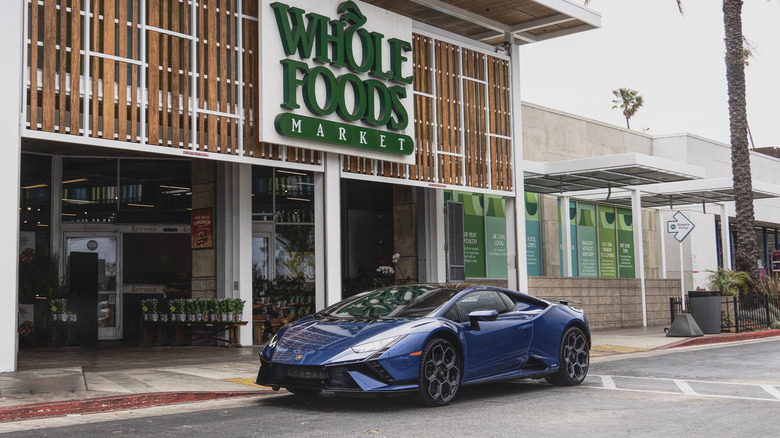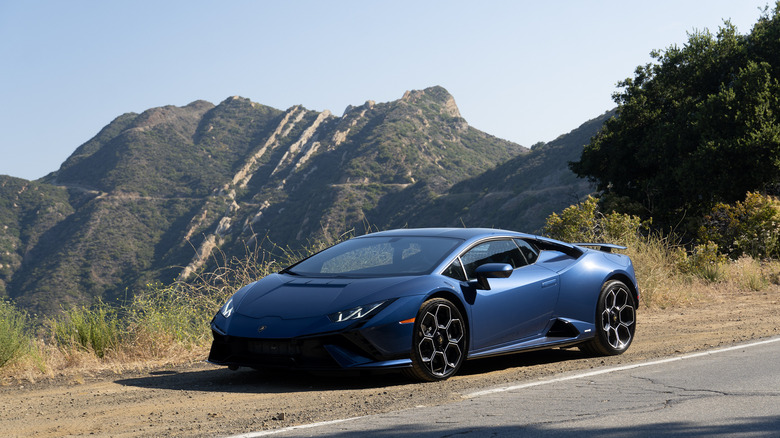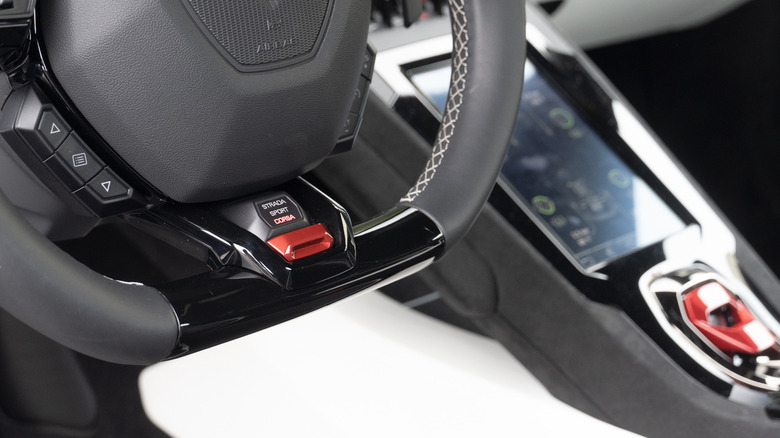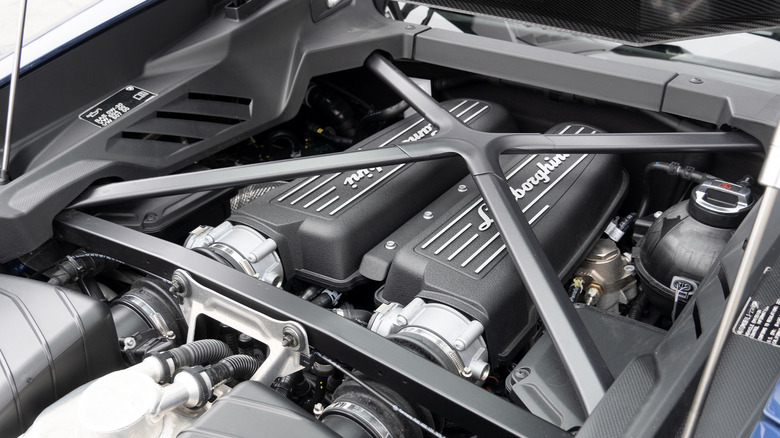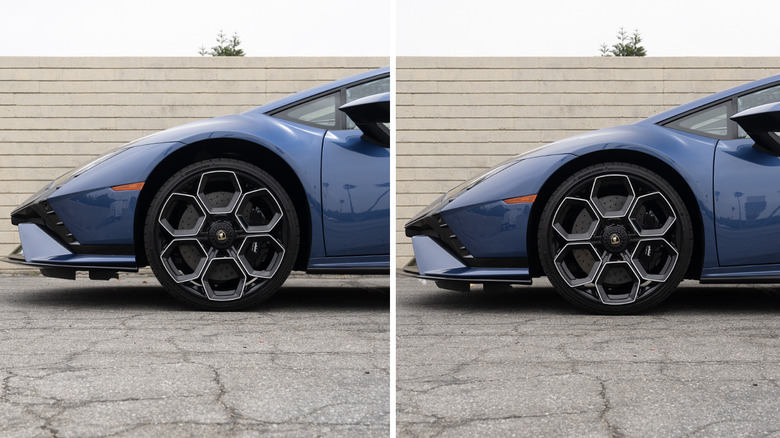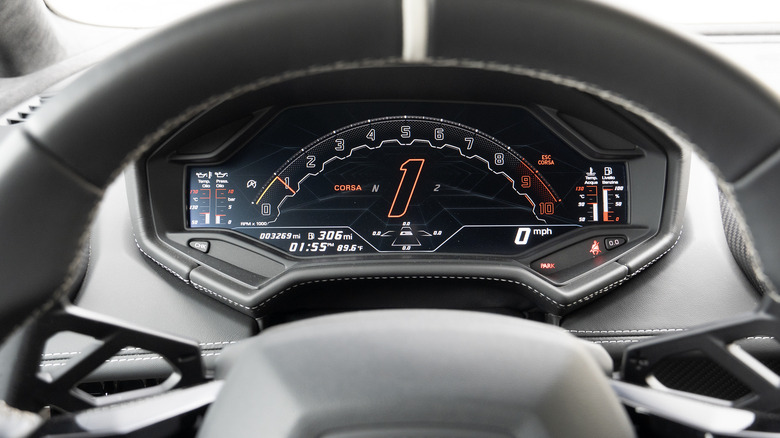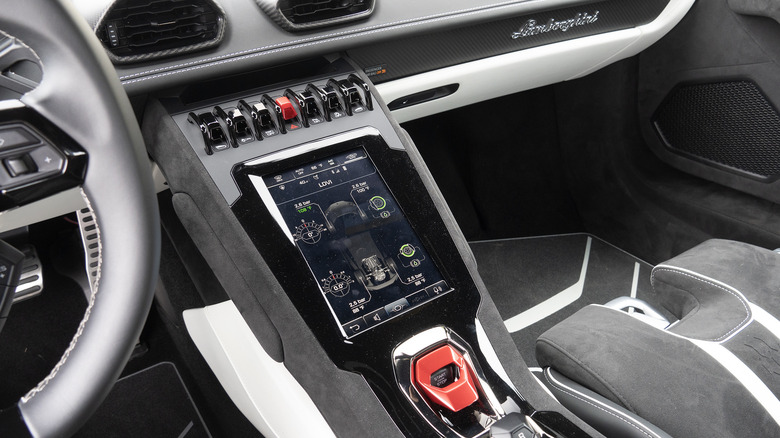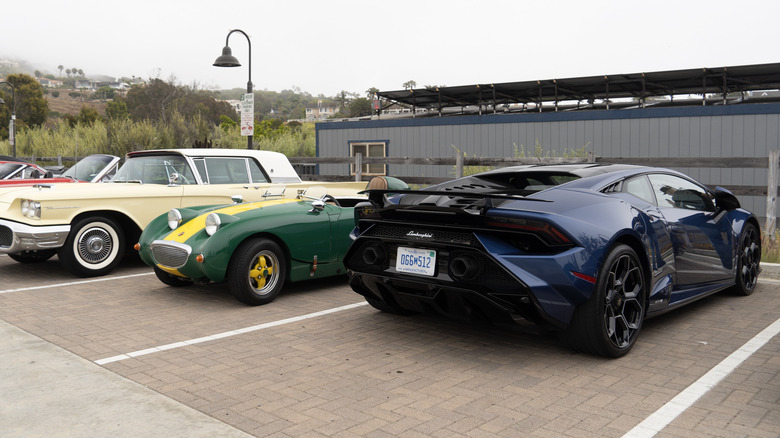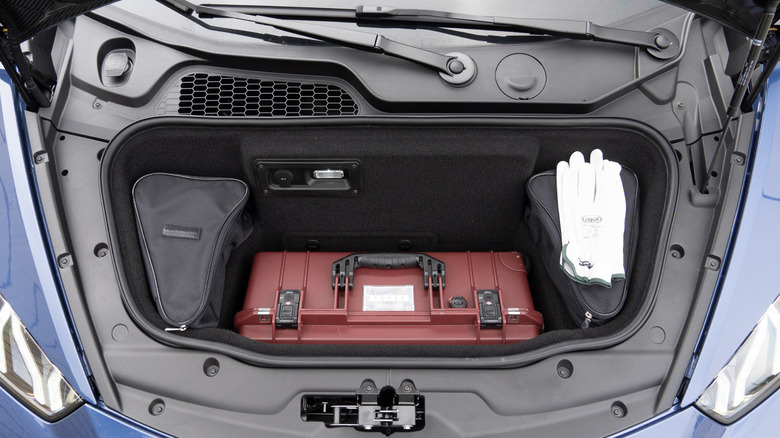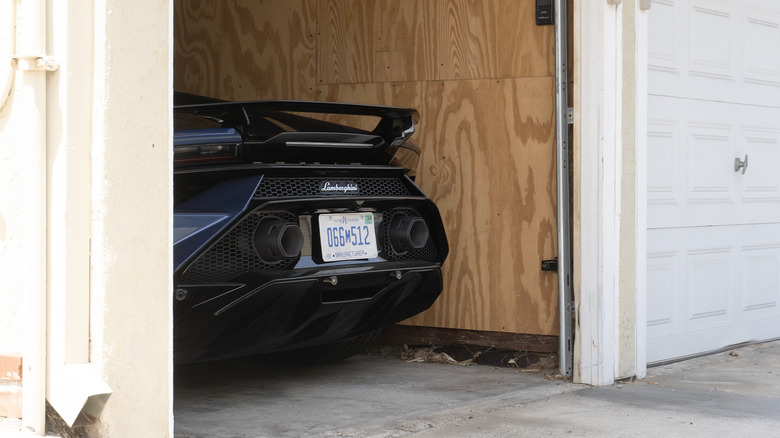2023 Lamborghini Huracán Tecnica Review: Daily-Driving A $300,000 Supercar
- Simply the world's best naturally aspirated V10
- Mid-engined chassis and rear-wheel drive
- Understated style for a Lambo
- Just streetable enough for a daily driver
- Still a head-turner for the child in us all
- Go ahead, add $85,000 of options to that $239,000 starting sticker
- Requires modest sacrifices in comfort and convenience
- Electronics a bit confusing to actually use
Last fall, Lamborghini introduced media to the new Huracán Tecnica with a track day at The Thermal Club in the hot desert near Palm Springs, California. After plenty of roasted tires and a few spins, nobody left the sessions with any doubt about whether Lambo aimed to unleash all 640 horsepower from the Huracán's final naturally aspirated V10 engine before this long-tenured mid-engined supercar transitions to hybrid power for the next generation.
But the team at Sant'Agata Bolognese also intends for the Tecnica to play two roles, one as track toy and the other as the best Huracán iteration yet for daily driving. To prove how well the Tecnica manages to straddle that line, Lamborghini loaned me a fully loaded Tecnica to test for a few days of fun on the mean streets of West Los Angeles.
But first, the obvious necessities
The Tecnica pulled up finished in a relatively understated Blu Notte paint job over 20-inch black wheels. Restrained for a Huracán, to say the least, but the color turns slightly luminescent in the right lighting—attributable to a "Pearl Effect" option on the window sticker that adds a healthy $14,000 to the starting $239,000 price tag. That color and finish contribute at least a portion to the final total of $323,995. Yep, that's just about $85,000 in options, but c'est la Lambo vie.
At some point during the course of the loan, I needed to face my fears of pushing such an expensive car to the limits outside of the controlled environment at The Thermal Club. So why not get the job over with, I figured, with a quick run up to the hills of Malibu for an early morning session in the rising sunlight? A few minutes of traffic on the Pacific Coast Highway revealed how well the Tecnica takes on average roads, but once we hit the tight turns in the hills, this Huracán seemed more like I'd brought the proverbial bazooka to a knife fight.
In the Tecnica, that 5.2-liter V10 pumps out 640 horsepower DIN (or 631hp SAE) and 443 lb-ft of torque, all sent to the rear wheels to highlight the mid-engined chassis balance and reduce weight for on-track performance. But all the stats on paper— a seven-speed dual-clutch transaxle, a curb weight of only 3,040 pounds, and improvements to both downforce (35%) and reduced drag (20%) compared to an Evo—go right out the (narrow) windows immediately once I switch over to Sport mode using the steering wheel button.
A supercar for Strada, Sport, and Corsa
All of a sudden, exhaust valves open up to produce an egregious cacophony echoing through the chaparral. I almost feel bad for locals waking up with a morning cup of coffee, but that wouldn't be very real Lamborghini owner of me. Instead, I just push harder, up past 5,000 RPM where the V10 starts to snort and scoff each time I lift off throttle in classic amateur fashion.
Banging through gears via the column-mounted shifters, a wonderful pop and bang meets plenty of rev-matching blips on downshifts. The ESC settings in Sport and Corsa also allow for plenty of edging up to some tail-happy drifting, since the V10 and transaxle layout means that 59% of those 3,040 lbs sit on the rear axle. But steering with my right foot feels far easier than ever before. Just brake hard, set the front tires until a bit of understeer crops up, then nudge into more gas to send the Tecnica skittering sideways. I fight the urge to lift off and hear that exhaust bark once more, instead staying comfortable in the slide as the engine winds up towards the 8,500-RPM redline.
Those 20-inch wheels wear Bridgestone Potenza Sport tires that measure a healthy 245 millimeters wide at the front and 305 at the rear, yet they start to protest fairly early into the morning's reverie. If anything, the tires don't quite match the Tecnica's obvious capabilities, even on public roads—but where that limited real-world performance led to a few sketchy moments at Thermal, here the realities of safe driving produce a healthy balance between furtive squealing and actual grip.
Staying sane on public roads is hard
On Stunt and Piuma in Malibu, plenty of blind corners mean I need to keep my speeds low enough that I can stop and swerve if a cyclist or jogger or deer or family minivan come around a bend. Luckily, a set of stupendous carbon-ceramics can haul down speed immediately—going up or downhill—and seem to only work better as the morning warms up.
On the wavy undulations around Malibu's longer curves, though, the Tecnica's stiff chassis actually limits my traction. Softer springs and shocks might keep the tires more directly planted and help to put down more power more of the time. Would all-wheel drive make a difference? Probably, but only at the kind of speeds that CHP and Sheriffs depend upon for their monthly ticket quotas. Plus a front diff, center driveshaft, and axles only add potentially more weight.
Little details make a big difference for a daily driver
Modest weight gains matter more on track than while hustling a mid-engined supercar along public roads. But little details that might seem unnecessary on a dedicated track toy make a huge difference in terms of real-world daily driving. Probably the single most important feature that helped me daily the Tecnica added the best $4,100 to that window sticker: a front-axle lift system.
That suspension rides low and tight on circuits or in canyons, but also means that every little dip in the road, speed bump, or driveway presents a challenge to avoid scraping the Tecnica's front splitter (which itself contributes to the improved aerodynamics). With the touch of a button just to the right of the steering wheel on the center console, the front-axle lift system raises the nose by 45 millimeters (1.77 inches). That figure might not sound like much, but I found that just leaving the system activated at all times kept my fears of scraping or scratching the front end to a minimum.
Unlike other front-axle lift systems, the Lambo setup stays raised the whole time while parked and even after power cycling the engine, then only lowers again automatically at 70 kilometers per hour (43.49 mph). After using front-axle lift the first time I pulled into my tiny one-car garage—surprisingly easy, once I figured out how to fold the side mirrors in to get past the actual doorway threshold—I left the nose raised the rest of the time in town. Once I got on the highway, the car took care of the rest.
Comfort and convenience at the edge of performance
The benefits of that $4,100 spent on front-axle lift became clear immediately. Other little details that I appreciated about the Tecnica took a bit longer to materialize. Once the afternoon sun and heat began soaking into the cockpit, I began to truly love how cold the air conditioning blows. Manufacturers of mid-engined car seem to understand: after all, that big V10 sits about six inches behind the seats and seems to transfer warmth straight in through the copious carbon fiber. Ventilated leather, admittedly my favorite automotive development of the past 20-plus years, would take my comfort to the next level, though.
I also discovered that unlike some sports and supercars, the Tecnica's transmission allowed me to switch back into regular automatic mode after using the paddle shifters. But otherwise, column-mounted paddle shifters always feel out of place to me—and given that on the Tecnica they require the turn signals to operate like a motorcycle's via buttons on the steering wheel, switching to smaller, wheel-mounted paddles might make a big difference.
But those massive paddles also contribute to the unavoidable aura of a fighter jet that the Tecnica imparts just as much as the Aventador or Urus (or every other Huracán variant, now totaling four trims plus convertible options). And keeping the paddle shifters on the column helps, at least somewhat, once the backup camera pops up on the gauge cluster instead of the more common touchscreen location.
Of course the electronics are a bit weird
Perhaps because the infotainment touchscreen is oriented vertically and measures only 8.4 inches, a camera angle in the gauge cluster seems wise. But the low-resolution display only becomes harder to use with the steering wheel turned at all—a serious consideration when reversing a $300,000-plus supercar with limited rear visibility.
The native infotainment system itself on that 8.4-inch screen also borders on incomprehensible. At least Lambo now offers CarPlay, albeit via a cable only, but otherwise the menus lack any words to go with a confusing bunch of icons. And I wanted to check out the Lamborghini Integrated Vehicle Dynamics (LDVI) system which shows tire and brake pressure and temperature.
Above the relatively small touchscreen, which does do the trick if only barely, a row of switchgear for windows, front-axle lift, ESC, parking sensors, and auto stop-start present a bit of a challenge while driving at anything above city speeds, mostly because the suspension jounces enough but also some of the buttons toggle up and down, while others only go one way. I suspect that after more time with a Huracán Tecnica as my daily—horror of horrors—I might get more acclimated to each and every button.
What do Lamborghini owners actually do all day?
During my brief stint as a totally real Lamborghini owner, I obviously needed to get into the right mindset. Canyon carving, honestly, might not be 100% proper for that job, so I rolled down to a Malibu Cars & Coffee meetup to park next to some classics and discuss the merits of air-cooled Porsches, of course.
Plenty of other local denizens came up to chat about the Tecnica, curious to learn more about which of the many Huracán packages I enjoyed most—and undoubtedly disappointed to learn that I didn't actually, you know, own this car. Next I rolled to Whole Foods to pick up some groceries, where I discovered exactly what fits in the Tecnica's front trunk. Specifically, an insulated Trader Joe's grocery bag snugly or, even more perfectly, a Pelican 1535 Air TRVL hard-sided suitcase. Note the set of white gloves that Lambo includes, not for driving but to keep fingers and fingernails clean in the case of a flat tire. Becase let's be real, I'm a Tecnica owner who orders Uber Eats or tells my assistant to go shopping for me.
Just in the off chance I might need to go whack some golf balls and talk the latest tech IPO with my other supercar buddies, though, the golf clubs needed to fit in the Lambo. No luck for a rear trunk, a la the C8 Chevy Corvette or Porsche Cayman, so the clubs went in the passenger seat. Just about the only thing I didn't do was eat some In-N-Out off the rear wing—whoops!
Living the Lambo life in a Tecnica
Everywhere I went short of a fast-food drive-through window, the Tecnica proved itself as a real-world attention grabber. We journalists can get jaded all too easily, but Lamborghinis definitely bring out the smiles and childlike fun to this day. A kid on summer vacation even chased me down the block and explained in stilted French-English that Lamborghini is his favorite marque, so I felt obliged to create a future customer and take him for a spin around the neighborhood (with mom's permission, of course).
And my Tecnica arrived in an understated blue! Now imagine bright yellow or red, or if I hadn't turned down the exhaust note by switching to Strada mode every time I drove anywhere near home hoping to keep my neighbors happy. On the other hand, imagine the Sterrato—Lambo's latest and greatest Huracán package that transforms the mid-engined supercar into a legit rally racer.
With a roof scoop, roof rails, and gnarly off-roading tires, the Sterrato stands out even more than the restrained Tecnica. But Lambo went the whole nine yards, with softer suspension and a revised front-axle mounting location in the chassis to more perfectly set up the wheel placement given an overall lift of 44mm to go along with a wider front and rear track.
Somehow just streetable enough for daily driving
Where the Porsche 911 Dakar package makes a case as the ultimate 911 daily driver, the Sterrato now supplants the Tecnica as perhaps the most comfortable, worry-free version of the Huracán. A Sterrato starts at about $40,000 more than a Tecnica, though, and every last one has already been pre-ordered. Those off-roading revisions may beef up any potential competence off the tarmac, but outside of the fantasy world where a Lambo owner actually goes four-wheeling in their mid-engined supercar, the Tecnica will lay down much better lap times at any road circuit on the planet.
Whether 99% of Tecnica buyers will even hit the track is almost as unlikely, so the daily driveability factors only become all the more important. Is the Sterrato one step too much? I say no, let's celebrate the end of the internal-combustion era by revisiting the absurd excess that first established supercars as a phenomenon two decades ago.
But over those 20 years, since the Huracán's Gallardo predecessor debuted in 2003, Lamborghini also steadily refined and perfected the more traditional V10 supercar. And the resulting knowledge that goes into the Tecnica just about perfectly fits the bill for both roles that this spectacular trim needs to play. Will the Tecnica require sacrifices to serve as a daily driver? Of course, it's a lowslung six-figure supercar. But during my erstwhile days as a Lamborghini owner, the joys of supercar life certainly shone through regardless.
